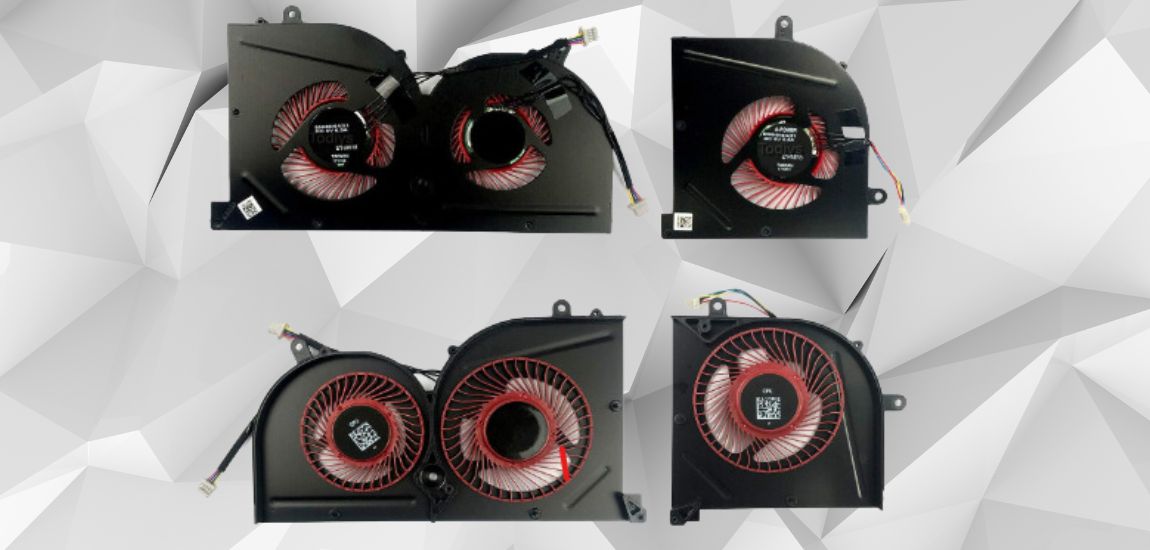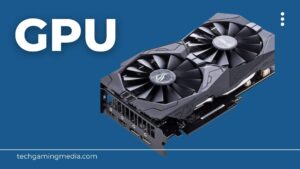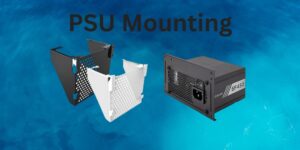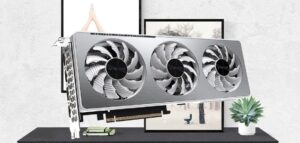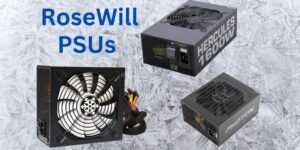The Truth About GPU Fans: Are They Always On?
In the world of PC gaming and high-performance computing, the debate around GPU fan behaviour has been a topic of interest for many enthusiasts. The question of whether GPU fans should always be spinning or if it’s acceptable for them to turn on and off based on temperature has been a subject of discussion. As GPUs continue to push the boundaries of performance, the importance of effective cooling solutions has become increasingly crucial. In this blog post, we’ll explore the pros and cons of having GPU fans always on and provide insights into the best practices for managing GPU cooling.
We’ll delve into the factors that affect GPU fan behaviour, potential issues with constant fan operation, and strategies for optimizing GPU cooling without sacrificing performance or comfort. By understanding the intricacies of GPU cooling, users can make informed decisions about their system’s configuration and ensure that their GPUs operate at optimal levels while maintaining a balance between cooling efficiency, noise levels, and power consumption.
Understanding the Behavior of GPU Fans
Understanding the behaviour of GPU fans is crucial for managing system thermals and performance. Typically, GPU fans operate dynamically, adjusting speed based on workload and temperature. During heavy usage like gaming, fans spin faster to dissipate heat efficiently, preventing overheating. Conversely, during idle or light usage, fans may slow down or stop to conserve energy and reduce noise. Customizable fan curves in software allow users to tailor fan behaviour to specific preferences or cooling requirements. Monitoring GPU temperatures and fan speeds provides insights into system health and aids in optimizing cooling performance.
Understanding GPU Cooling Mechanisms:
To understand GPU cooling mechanisms, it’s important to consider the different types of GPU coolers and how they work to dissipate heat. The main GPU cooling solutions are:
1. Air Coolers:
- Open-air coolers: These have multiple fans that draw in cool air and pass it across the heatsink. The warm air is then dispersed into the case interior.
- Blower-style coolers: These have a single fan that draws in cool air and blows it out the rear of the card and out of the case. Blowers are more efficient at evacuating heat from the case.
2. Liquid Coolers:
- All-in-One (AIO) liquid coolers: These come pre-assembled and are easy to install. They provide great cooling performance but have limited customization options.
- Custom water cooling loops: These offer more customization but require more setup. They can provide excellent cooling for overclocked GPUs.
The choice between air and liquid cooling depends on factors like noise, aesthetics, and cooling performance. Liquid cooling generally offers better cooling for overclocked GPUs but requires more setup. Proper case airflow is also crucial for GPU cooling. Blower-style coolers are less dependent on case airflow as they exhaust hot air out of the case. However, open-air coolers rely on good case airflow to keep GPU temperatures low. Thermal throttling occurs when a GPU gets too hot, causing performance to decrease. Effective cooling is necessary to prevent thermal throttling and maintain peak GPU performance.
Active Cooling with GPU Fans:
Active cooling with GPU fans refers to the use of fans to dissipate heat from the graphics processing unit (GPU) in a computer system. This is the most common type of GPU cooling solution found in gaming and high-performance computing systems
Active GPU cooling typically involves one or more fans that draw in cool air and pass it across the GPU’s heatsink. The warm air is then expelled out of the case, either through the rear of the card (blower-style coolers) or into the case interior (open-air coolers)
The main advantages of active GPU cooling with fans are:
- Efficient heat dissipation: The fans help to effectively remove heat from the GPU, preventing thermal throttling and maintaining peak performance.
- Customization options: Open-air coolers with multiple fans offer more customization possibilities compared to blower-style coolers.
However, active cooling also has some drawbacks:
- Noise: Fans can generate noise, which may be undesirable for some users.
- Dependence on case airflow: Open-air coolers rely on good case airflow to keep GPU temperatures low.
Passive Cooling of GPU fans with Heatsinks:
Passive cooling of GPUs refers to the use of heatsinks without fans to dissipate heat. This cooling solution is typically found in data centre graphics cards intended for installation in servers with regulated temperature ranges provided by the data centre’s HVAC system.
Key points about passive GPU cooling with heatsinks:
- No fans: Passive cooling relies on the natural airflow to cool the GPU, without the use of fans.
- Heatsinks: Large heatsinks are used to dissipate heat from the GPU. The heatsinks are in direct contact with the GPU die and memory chips.
- Quiet operation: Passive cooling is much quieter compared to active cooling with fans.
- Dependence on case airflow: Passively cooled GPUs require good case airflow and exhaust vents to effectively dissipate heat.
- Controlled environment: Passive cooling is suitable for data centres and servers, where the temperature is regulated by the HVAC system.
- Limitations: Passively cooled GPUs may not be able to dissipate heat as effectively as actively cooled GPUs, especially under heavy loads. This can lead to thermal throttling and performance degradation.
The choice between active and passive GPU cooling depends on factors such as intended usage, noise preference, and temperature requirements. Active cooling is generally better suited for gaming and professional workloads, while passive cooling is designed for data centres and AI training applications.
Factors Affecting GPU Fan Behavior:
Factors affecting GPU fan behaviour include:
- Different GPU models and brands implement distinct cooling strategies, impacting how fans operate to manage temperatures. Choosing the right GPU can significantly influence cooling performance.
2. Driver Software:
- Driver software plays a crucial role in influencing GPU fan behaviour. Regular updates can optimize fan performance, ensuring efficient cooling and impacting overall system stability and the lifespan of the graphics card.
3. User Preferences:
- User preferences are essential in influencing GPU fan behaviour. Manual adjustments allow users to customize fan speeds, finding the right balance between effective cooling and acceptable noise levels for their system.
4. Driver Settings:
- Graphics card drivers and software may have settings that control fan behaviour. Users can configure their GPUs to keep the fans running constantly for better cooling or personal preference.
5. BIOS/UEFI Settings:
- The GPU’s firmware settings, accessible through the BIOS or UEFI, can influence fan behaviour. Users can configure these settings to keep the fans spinning continuously for improved cooling performance
Potential Issues with Constant Fan Operation:
While having GPU fans always on may seem like a good idea to keep the GPU cool, it can lead to several potential issues:
- Increased noise: Constant fan operation can result in higher noise levels, which may be undesirable for some users.
- Reduced fan lifespan: Continuous fan operation can accelerate wear and tear, leading to a shorter lifespan for the fans.
- Increased power consumption: Keeping the fans running at all times can result in higher power consumption, which may impact energy efficiency and electricity bills.
Optimizing GPU Cooling:
To optimize GPU cooling without keeping the fans constantly on, consider the following strategies:
1. Adjust the fan curve:
- Using software like MSI Afterburner, EVGA Precision X1, or GPU Tweak III, you can adjust the temperature threshold at which the fans start spinning and their intensity at specific temperature points. This allows you to customize the fan behaviour based on your preferences and system requirements.
2. Improve case airflow:
- Ensure that your PC case has adequate airflow by keeping the case open, cleaning it regularly, and adding more case fans if necessary. Good airflow helps to dissipate heat more efficiently, reducing the load on the GPU fans.
3. Monitor GPU temperatures:
- Keep an eye on your GPU temperatures using monitoring software like GPU-Z or HWMonitor. If you notice consistently high temperatures, consider adjusting your fan curve or exploring other cooling solutions like liquid cooling or better case airflow
Debunking Common Misconceptions:
Here are some common misconceptions about GPU cooling that need to be debunked:
1. Passive cooling is always quieter than active cooling:
- While passively cooled GPUs are generally quieter than actively cooled ones, this is not always the case.
- Some actively cooled GPUs use large heatsinks and low-speed fans that can be very quiet, especially at idle.
2. Passive cooling is more reliable than active cooling:
- Fans can fail, but they are designed to have a long lifespan. Fan failure is not as common as some believe.
- Passive cooling relies on case airflow, which can be disrupted by dust buildup, potentially leading to overheating.
3. Passive cooling is more power efficient than active cooling:
- The power draw of a fan is negligible compared to the GPU itself. The difference in power consumption between passive and active cooling is minimal.
4. Passively cooled GPUs always run hotter than actively cooled ones:
- Passively cooled GPUs can run just as cool as actively cooled ones if they have sufficient heatsink mass and case airflow.
- Actively cooled GPUs can run hotter than passively cooled ones if the fans are not spinning fast enough.
5. Actively cooled GPUs are always better for overclocking:
- Passively cooled GPUs can be overclocked if they have sufficient cooling capacity.
- Actively cooled GPUs may not always provide enough cooling for extreme overclocks, especially if the fans are not spinning fast enough.
Comparing GPU Fans Cooling Solutions:
When comparing GPU cooling solutions, two primary methods emerge, active cooling with fans and passive cooling with heatsinks.
1. Active Cooling (Fans):
- Efficiency: Fans actively dissipate heat by blowing air over the GPU heatsink, ensuring efficient cooling, especially during heavy workloads.
- Flexibility: Adjustable fan speeds allow for dynamic cooling based on workload and temperature, providing better thermal management.
- Noise: While effective, fans can generate noise, particularly at higher speeds, which may be undesirable for some users.
- Power Consumption: Active cooling requires energy to operate the fans, contributing to overall system power consumption.
2. Passive Cooling (Heatsinks):
- Silent Operation: Heatsinks offer silent operation as they don’t rely on fans, making them ideal for noise-sensitive environments.
- Reliability: With no moving parts, heatsinks have higher reliability and longevity compared to fans, reducing the risk of mechanical failure.
- Limited Cooling Capacity: Passive cooling may be less effective under heavy workloads or in environments with poor airflow, leading to higher temperatures.
- Space Constraints: Large heatsinks may occupy more space within the system, limiting compatibility with smaller form factor cases.
Conclusion
In conclusion, debunking common misconceptions about GPU cooling is essential for making informed decisions when selecting cooling solutions for graphics cards. While passive cooling is often associated with quiet operation and reliability, active cooling with fans can also offer efficient and effective heat dissipation. Factors such as case airflow, heatsink design, and fan speed play crucial roles in determining the cooling performance of GPUs. Understanding the nuances of both passive and active cooling methods helps users choose the most suitable option based on their specific needs, whether it be for gaming, professional workloads, or data centre applications. By dispelling misconceptions, users can optimize GPU cooling for optimal performance and longevity.
FAQs:
Q1: What are the key considerations for GPU liquid cooling?
- GPU liquid cooling involves circulating water around the GPU to dissipate heat efficiently. Key considerations include physical space availability, costs versus desired performance, and the increasing power consumption and heat generation of modern GPUs.
Q2: Why consider liquid-cooled GPUs over air-cooled ones?
- Liquid-cooled GPUs offer superior thermal performance, keeping the graphics card cooler under heavy loads, which is crucial for high-end GPUs used in AI or machine learning tasks. However, air-cooled GPUs are easier to set up, require less maintenance, and are more affordable.
Q3: What are the different liquid cooling options for GPU farms in data centres?
- Liquid cooling solutions for GPU farms include direct-to-chip cooling, immersive cooling, and rear door heat exchangers (RDHx). Each option has its advantages in terms of power efficiency, space utilization, scalability, noise reduction, complexity, and cost.
Q4: How can passive cooling be achieved for GPUs?
- Passive cooling for GPUs can be achieved by using large heatsinks without fans. This method is quieter and more reliable but requires good case airflow for effective heat dissipation. It is commonly used in data centre graphics cards and AI training applications.
Q5: What are the benefits of water-cooled GPUs over air-cooled ones?
Water-cooled GPUs are more effective at cooling, can be overclocked more easily, produce less noise, are more durable, and typically have a longer lifespan than air-cooled GPUs. Water cooling solutions are crucial for combating GPU thermal throttling and maintaining peak performance.
Last Updated on 12 May 2024 by Ansa Imran
Explore the digital realms of gaming withAnsa Imran, a seasoned expert in tech gaming media. Immerse yourself in insightful articles, reviews, and the latest trends in the gaming universe.”

